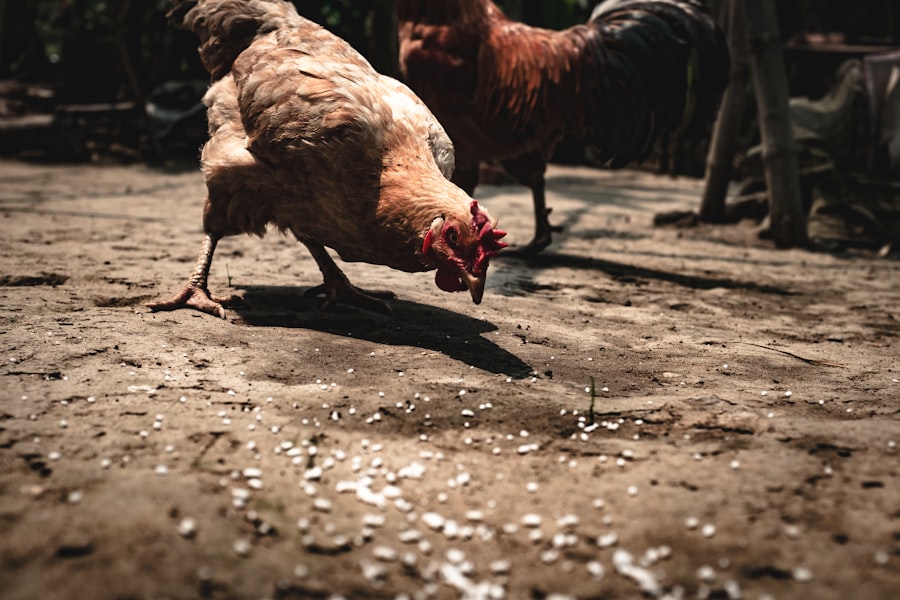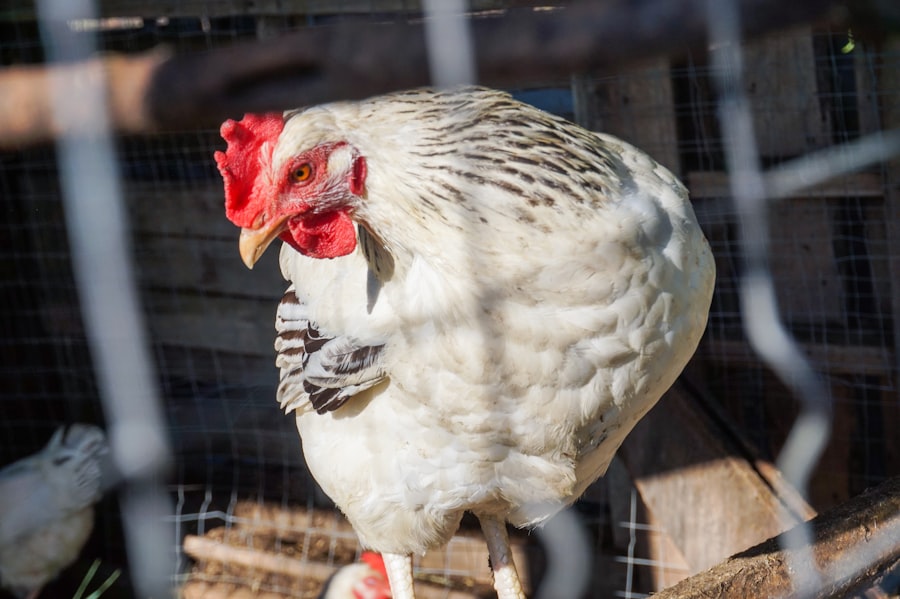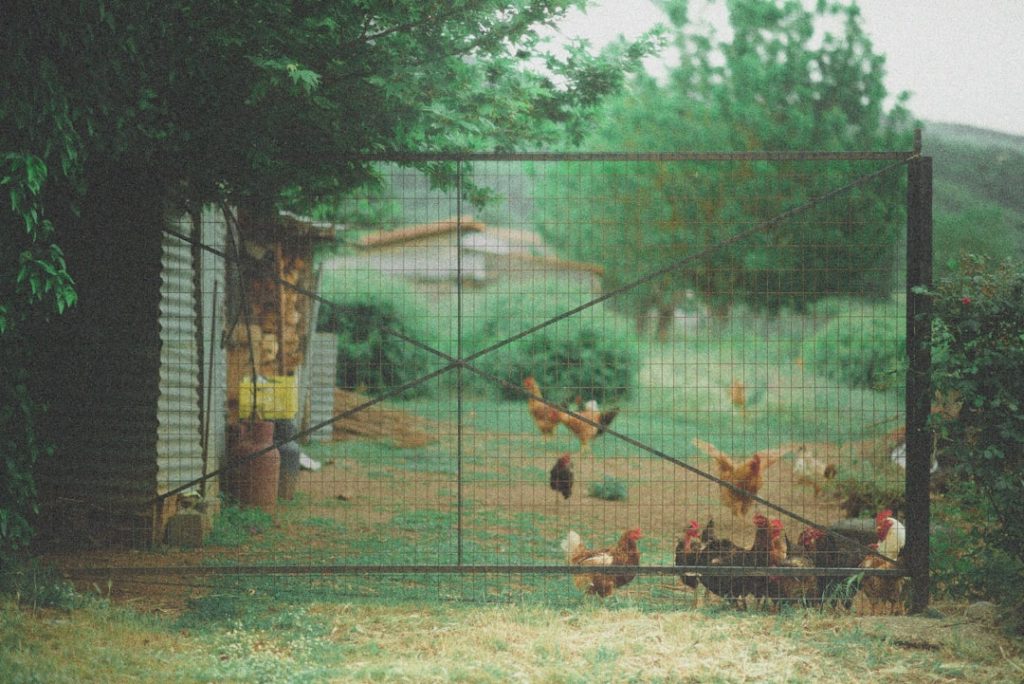Chicken housing, or chicken coops, are essential structures for raising healthy and content chickens. These enclosures provide shelter, protection, and a safe space for chickens to roost, lay eggs, and seek refuge from predators and weather conditions. A well-designed coop should allow easy access for cleaning, feeding, and egg collection.
Chicken coops can be constructed from various materials, including wood, metal, and plastic. The size and layout depend on the number of chickens and available space. Important design considerations include ventilation, insulation, nesting boxes, roosting bars, and outdoor access.
Proper safety and security measures are crucial to protect chickens from predators and other threats. Coops come in various designs, from small backyard structures to large commercial facilities. Regardless of size, the primary goal is to create a safe and comfortable environment for the flock.
This involves balancing factors such as space, protection, and ease of maintenance. When selecting or building a chicken coop, it’s important to consider the specific needs of the flock and ensure that the structure provides adequate protection from predators and environmental elements. Understanding these fundamental aspects of chicken housing is crucial for creating a suitable living space that promotes the health and well-being of chickens.
Table of Contents
- 1 Space Requirements for Chicken Coops
- 2 Ventilation and Insulation in Chicken Coops
- 3 Nesting Boxes and Roosting Bars
- 4 Access to Outdoor Space and Pasture
- 5 Safety and Security Measures for Chicken Coops
- 6 Maintenance and Cleaning of Chicken Coops
- 7 FAQs
- 7.1 What are the ideal housing requirements for keeping chickens?
- 7.2 What type of shelter is best for keeping chickens?
- 7.3 How much space do chickens need in their housing?
- 7.4 What should be included in a chicken coop for optimal housing?
- 7.5 What are the key considerations for ventilation in a chicken coop?
- 7.6 How can I ensure the safety of my chickens from predators in their housing?
Key Takeaways
- Proper chicken housing is essential for the health and well-being of your flock.
- Adequate space is crucial for the comfort and productivity of chickens in a coop.
- Good ventilation and insulation are necessary to maintain a healthy environment inside the coop.
- Nesting boxes and roosting bars provide essential areas for laying eggs and resting.
- Access to outdoor space and pasture is important for the physical and mental health of chickens.
Space Requirements for Chicken Coops
Indoor Space Requirements
As a general rule of thumb, each chicken should have at least 2-3 square feet of indoor space in the coop. This allows them to move around comfortably, roost, and lay eggs without feeling cramped.
Outdoor Space and Coop Design
In addition to providing enough space for the chickens to move around comfortably, it’s important to consider the layout and design of the coop. This includes factors such as nesting boxes, roosting bars, and access to food and water. The coop should also be designed to facilitate easy cleaning and maintenance.
Breed-Specific Space Requirements
When planning the space requirements for a chicken coop, it’s important to consider the specific needs of the breed of chickens being housed. Some breeds may require more space than others, so it’s important to do your research and ensure that the coop meets their specific needs.
By providing adequate space for your flock, you can create a comfortable and healthy living environment for your chickens.
Ventilation and Insulation in Chicken Coops

Proper ventilation is essential for maintaining a healthy environment inside a chicken coop. Good ventilation helps to remove excess moisture, ammonia, and other airborne pollutants that can build up from chicken waste. It also helps to regulate temperature and prevent the buildup of harmful gases that can be detrimental to the health of the chickens.
Ventilation can be achieved through windows, vents, or openings in the coop that allow for air circulation without creating drafts. It’s important to ensure that the coop is well-ventilated year-round, even in colder climates where insulation is also necessary. Insulation is another important factor to consider when designing or selecting a chicken coop.
Insulation helps to regulate temperature inside the coop by keeping it warmer in the winter and cooler in the summer. This is especially important in regions with extreme temperatures, as it helps to protect the chickens from heat stress or frostbite. Insulation can be achieved through materials such as foam board, fiberglass, or reflective insulation.
It’s important to insulate the walls, ceiling, and floor of the coop to create a comfortable and stable environment for the chickens year-round. Proper ventilation and insulation are essential for maintaining a healthy environment inside a chicken coop. Good ventilation helps to remove excess moisture, ammonia, and other airborne pollutants that can build up from chicken waste.
It also helps to regulate temperature and prevent the buildup of harmful gases that can be detrimental to the health of the chickens. Ventilation can be achieved through windows, vents, or openings in the coop that allow for air circulation without creating drafts. Insulation is also important for regulating temperature inside the coop by keeping it warmer in the winter and cooler in the summer.
This is especially important in regions with extreme temperatures, as it helps to protect the chickens from heat stress or frostbite. By ensuring proper ventilation and insulation in a chicken coop, you can create a comfortable and healthy living environment for your flock.
Nesting Boxes and Roosting Bars
Nesting boxes are essential for providing a comfortable and private space for hens to lay their eggs. Each nesting box should be large enough for a hen to enter comfortably and provide enough privacy to encourage egg laying. The boxes should be lined with clean bedding material such as straw or wood shavings to provide a soft and clean surface for the eggs.
It’s important to provide enough nesting boxes for the number of hens in the flock to prevent competition or overcrowding. Roosting bars are another important feature of a chicken coop that provides a place for chickens to perch at night. Roosting bars should be positioned higher than the nesting boxes to encourage chickens to sleep on them rather than in the nesting boxes where they may soil their eggs.
The bars should be wide enough for the chickens to grip comfortably with their feet and positioned at a height that allows them to roost without touching the ceiling of the coop. Nesting boxes and roosting bars are essential features of a chicken coop that provide comfort and functionality for the flock. Nesting boxes provide a private space for hens to lay their eggs with clean bedding material to encourage egg laying.
It’s important to provide enough nesting boxes for the number of hens in the flock to prevent competition or overcrowding. Roosting bars provide a place for chickens to perch at night and should be positioned higher than the nesting boxes to encourage chickens to sleep on them rather than in the nesting boxes where they may soil their eggs. By providing suitable nesting boxes and roosting bars in a chicken coop, you can create a comfortable and functional living environment for your flock.
Access to Outdoor Space and Pasture
Access to outdoor space is important for allowing chickens to engage in natural behaviors such as scratching for food, dust bathing, and exploring their surroundings. Outdoor access also provides opportunities for exercise and exposure to natural sunlight which is essential for their health and well-being. When designing or selecting a chicken coop, it’s important to consider factors such as fencing, predator protection, and access to pasture or outdoor run areas.
Pasture-based systems allow chickens to graze on grasses, insects, and other natural foods which can improve the nutritional quality of their eggs and meat. Providing access to pasture not only benefits the chickens but also contributes to sustainable farming practices by reducing reliance on commercial feed sources. It’s important to rotate pasture areas regularly to prevent overgrazing and maintain healthy vegetation for the chickens to graze on.
Access to outdoor space is essential for allowing chickens to engage in natural behaviors such as scratching for food, dust bathing, and exploring their surroundings. Outdoor access also provides opportunities for exercise and exposure to natural sunlight which is essential for their health and well-being. When designing or selecting a chicken coop, it’s important to consider factors such as fencing, predator protection, and access to pasture or outdoor run areas.
Pasture-based systems allow chickens to graze on grasses, insects, and other natural foods which can improve the nutritional quality of their eggs and meat. Providing access to pasture not only benefits the chickens but also contributes to sustainable farming practices by reducing reliance on commercial feed sources. By providing access to outdoor space and pasture areas, you can create a natural and healthy living environment for your flock.
Safety and Security Measures for Chicken Coops

Protecting Against Predators
This can be achieved through measures such as installing sturdy fencing around the perimeter of the coop, using hardware cloth or welded wire mesh on windows and vents, and securing doors with locks or latches. It’s also important to regularly inspect the coop for any signs of damage or wear that could compromise its security.
Fire Prevention and Emergency Exits
In addition to protecting against predators, it’s important to consider other safety measures such as fire prevention and emergency exits. Coops should be equipped with smoke detectors, fire extinguishers, and clear pathways for emergency evacuation in case of a fire or other emergencies. It’s also important to keep electrical wiring out of reach of chickens and ensure that heating sources are safely installed and maintained.
Creating a Safe and Protected Environment
By implementing safety and security measures in a chicken coop, you can create a safe and protected living environment for your flock. This includes regularly inspecting the coop for any signs of damage or wear, keeping the coop clean and well-maintained, and ensuring that all safety measures are in good working order.
Maintenance and Cleaning of Chicken Coops
Regular maintenance and cleaning are essential for keeping a chicken coop in good condition and ensuring the health of the flock. This includes tasks such as removing soiled bedding material from nesting boxes and roosting bars, cleaning food and water containers regularly, and sweeping or raking out debris from the floor of the coop. It’s also important to inspect the coop for any signs of damage or wear that may need repair.
Deep cleaning should be done periodically by removing all bedding material from the coop, scrubbing surfaces with a mild detergent or disinfectant, and allowing them to dry thoroughly before adding fresh bedding material. This helps to prevent the buildup of bacteria or parasites that can be harmful to the chickens’ health. Regular maintenance and cleaning are essential for keeping a chicken coop in good condition and ensuring the health of the flock.
This includes tasks such as removing soiled bedding material from nesting boxes and roosting bars, cleaning food and water containers regularly, and sweeping or raking out debris from the floor of the coop. It’s also important to inspect the coop for any signs of damage or wear that may need repair. Deep cleaning should be done periodically by removing all bedding material from the coop, scrubbing surfaces with a mild detergent or disinfectant, and allowing them to dry thoroughly before adding fresh bedding material.
By maintaining a clean and hygienic living environment for your flock, you can help prevent disease outbreaks and promote their overall health and well-being. In conclusion, understanding the basics of chicken housing is essential for creating a suitable living space for your flock that promotes their health and well-being. Providing adequate space with proper ventilation and insulation is crucial for maintaining a healthy environment inside a chicken coop.
Nesting boxes and roosting bars provide comfort and functionality for the flock while access to outdoor space allows chickens to engage in natural behaviors. Implementing safety measures such as predator protection and fire prevention is essential for protecting the flock from potential threats while regular maintenance and cleaning are necessary for keeping the coop in good condition. By considering these factors when designing or selecting a chicken coop, you can create a comfortable and healthy living environment for your flock.
If you’re interested in learning more about ideal housing requirements for keeping chickens, you may also want to check out this article on large chicken coop ideas from PoultryWizard. This article provides helpful tips and suggestions for creating a comfortable and spacious living environment for your feathered friends.
FAQs
What are the ideal housing requirements for keeping chickens?
The ideal housing for keeping chickens should provide protection from predators, adequate space for roosting and nesting, good ventilation, and access to food and water.
What type of shelter is best for keeping chickens?
A chicken coop with a secure roof and walls is the best type of shelter for keeping chickens. It should also have a designated area for nesting and roosting.
How much space do chickens need in their housing?
Chickens need at least 2-3 square feet of space per bird inside the coop, and at least 8-10 square feet of outdoor space per bird in the chicken run.
What should be included in a chicken coop for optimal housing?
A chicken coop should include roosting bars, nesting boxes, proper ventilation, and easy access to food and water. It should also be easy to clean and maintain.
What are the key considerations for ventilation in a chicken coop?
Good ventilation in a chicken coop is essential to prevent the buildup of ammonia and moisture. This can be achieved through windows, vents, and proper air circulation.
How can I ensure the safety of my chickens from predators in their housing?
To ensure the safety of chickens from predators, the coop should have secure walls and a roof, and the outdoor run should be enclosed with wire mesh. Additionally, the coop should be locked at night.
Meet Walter, the feathered-friend fanatic of Florida! Nestled in the sunshine state, Walter struts through life with his feathered companions, clucking his way to happiness. With a coop that’s fancier than a five-star hotel, he’s the Don Juan of the chicken world. When he’s not teaching his hens to do the cha-cha, you’ll find him in a heated debate with his prized rooster, Sir Clucks-a-Lot. Walter’s poultry passion is no yolk; he’s the sunny-side-up guy you never knew you needed in your flock of friends!







